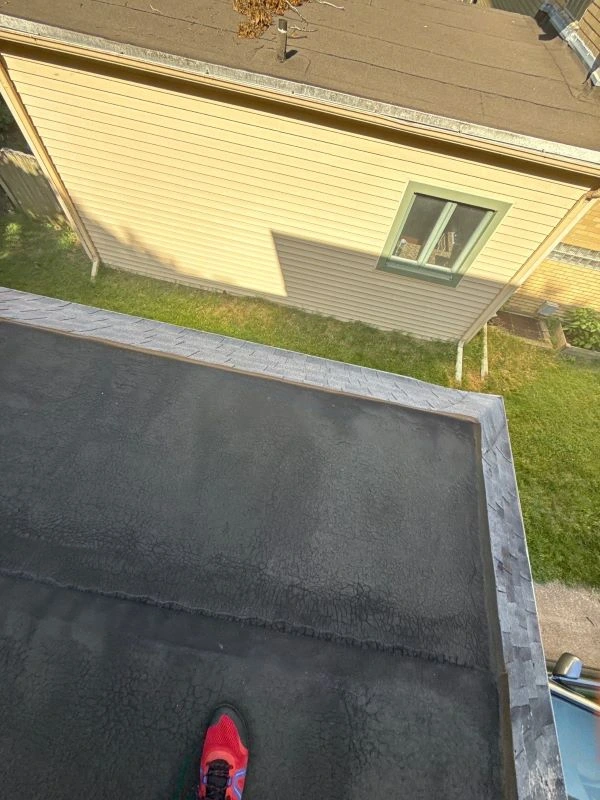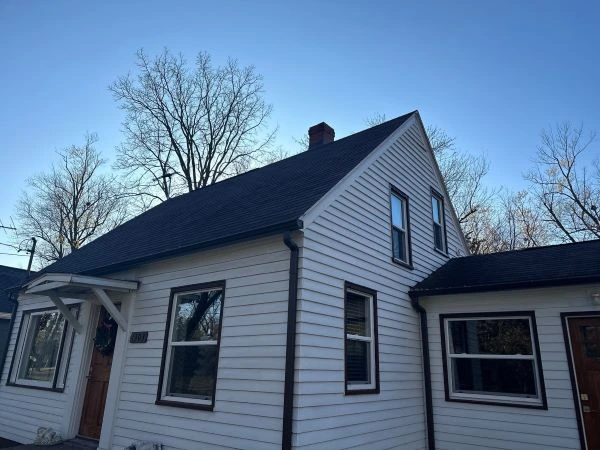Gutter Cleaning Service: What’s Included & How Often
As Worthy Construction LLC, we take gutter maintenance seriously because it protects your home’s most valuable systems—roofing, siding, windows, and insulation. A professional gutter cleaning service is more than clearing leaves; it’s a methodical process that safeguards foundations, prevents costly water damage, and extends the life of exterior components. Below, we outline exactly what’s included, how often to schedule, smart DIY tips, the most common problems, and the signs you need professional help—plus actionable guidance to keep your gutters performing flawlessly year-round

What’s Included in a Professional Gutter Cleaning Service
A comprehensive gutter cleaning service should deliver far more than debris removal. When we service your home, here’s what you can expect from our multi-step process:
- Full System Inspection
We begin with a top-to-bottom inspection of the gutter runs, downspouts, hangers, end caps, miters, and fascia interface. Our team checks for sagging, improper pitch, loose fasteners, rust, and seam separation. We also examine nearby roofing and flashing for signs of ice dam impacts or overflow staining. This ensures we identify underlying issues—like structural rot or hidden blockages—before they escalate into foundation and siding damage. - Hand Removal & Safe Debris Extraction
We carefully hand-scoop leaves, twigs, shingle grit, and wind-blown debris to prevent mess and protect landscaping. Where appropriate, we use specialized tools to lift compacted sludge that harbors moss and algae. By removing material at its source instead of forcing it through downspouts, we reduce clogs and eliminate the organic seedbed that triggers rapid re-accumulation, especially after storms or heavy pollen cycles. - Downspout Flushing & Flow Restoration
Clear gutters are only half the equation—downspouts must drain freely. We flush each downspout from the top with controlled pressure and verify discharge at grade. If a blockage is present, we dismantle elbows or use augers to break obstructions caused by pine needles, seed pods, or shingle granules. Proper downspout flow is essential to foundation protection, basement dryness, and soil erosion control. - Minor Adjustments & Fastener Tightening
During cleaning, we correct minor pitch issues, re-secure loose hangers, replace worn screws, and reseat out-of-line sections within safe working limits. Small tweaks matter: even a few degrees of misalignment can cause standing water, which accelerates corrosion and attracts insects. Our technicians ensure the system sheds water efficiently toward downspout outlets, improving roof drainage and prolonging the life of your gutter system. - Leak Sealing, Joint Resealing & Miter Repairs
We examine seams, corners (miters), and end caps for drips or staining and apply compatible sealants where needed. Addressing leaks during the service helps prevent fascia rot, streaking, and ice expansion in colder months. For aluminum and steel systems, our resealing keeps joints watertight. For half-round or copper systems, we recommend appropriate solutions that respect material integrity and aesthetics. - Perimeter Cleanup & Haul-Away
After restoring flow, we conduct a full ground-level cleanup. All debris is bagged and hauled away so your property looks pristine. We also ensure downspout extensions and splash blocks are placed correctly to direct water away from the home. The final walkthrough confirms your gutter maintenance is complete and that water is moving as intended.
How Often Should You Schedule Gutter Cleaning?
Frequency depends on roof size, nearby trees, roofing material, and local weather patterns. As a baseline, most homes benefit from twice-yearly service—in spring (to remove seed pods and pollen buildup) and in fall (after leaf drop). Homes with conifers, heavy pollen, or complex rooflines may require quarterly attention. If your roof sheds significant shingle granules or you’ve experienced ice dams, you’ll want more frequent inspections to preserve gutter integrity and ensure predictable runoff.
DIY Gutter Cleaning: Smart Steps & Safety Essentials
While we encourage professional service for safety and thoroughness, some homeowners choose to handle routine upkeep. If you opt for DIY, follow these best practices to reduce risk and improve results:
- Use the Right Ladder & Spotter
Choose a stable extension ladder with levelers and always work with a spotter. Avoid leaning the ladder directly on gutters; use standoff stabilizers to protect the system and provide a safe working angle. Never reach more than an arm’s length; climb down and move the ladder to prevent tipping. Wear gloves, eye protection, and non-slip footwear, especially on dew-damp mornings or after light rain. - Scoop First, Flush Second
Begin with a plastic scoop or gutter spoon to remove bulk debris. Bag waste as you go to keep landscaping clean. Only after the channels are mostly clear should you flush with a garden hose from the high end toward each downspout. This method prevents clogs from compacting deeper in elbows and ensures you can spot leaks and misalignments during the rinse. - Check Pitch, Hangers & Seams
Water should flow steadily toward downspouts without pooling. Use a carpenter’s level to verify consistent pitch—usually about 1/4 inch drop per 10 feet. Tighten visible hangers that have pulled away from fascia, and inspect seams and miters for drips while flushing. For small leaks, apply a gutter-safe sealant on a clean, dry surface. If sagging persists, it’s time to call in professionals. - Mind the Downspouts & Exits
Clear debris at the downspout inlets with a gloved hand or a small brush. If the outlet is congested, disconnect the lower elbow to extract clogs manually. Ensure discharge directs water at least four to six feet away from the foundation using extensions or splash blocks. Poor termination is a leading cause of basement moisture, soil displacement, and frost-heave damage. - Know When to Stop & Call Pros
If you encounter steep pitches, two-story heights, electrical service drops, or brittle roofing, step back. Safety always outranks speed. Signs such as widespread seam failure, persistent standing water, fascia softness, or obvious structural issues warrant expert evaluation. Our team can diagnose underlying defects and recommend long-term remedies like gutter guards, re-pitching, or system replacement.
Common Gutter Problems We Solve
- Chronic Clogs & Overflow. Repeated overflow during storms signals limited capacity, improper pitch, or obstructions in downspouts. We address root causes, not just symptoms.
- Sagging & Pull-Away. Loose fasteners and rotted fascia allow sections to sag. We re-secure with heavy-duty hangers and correct pitch to restore flow.
- Leaking Seams & Miters. Aged sealant and thermal movement open joints. We reseal with high-performance products and evaluate for permanent fixes.
- Ice Dams & Winter Backups. In cold climates, poor attic insulation and ventilation combine with debris to trap meltwater. Our integrated roofing and insulation expertise tackles cause and effect.
- Erosion & Foundation Settling. Misplaced downspout discharge drives water to the foundation. We extend, redirect, and grade for effective dispersion.
Signs You Need a Professional Gutter Cleaning Service Now
- Waterfall Edges & Tiger Striping
If rain produces sheeting water over the gutter lip or leaves dark streaks (“tiger striping”) down the face, your system is overloaded or mis-pitched. Overflow not only stains siding but also saturates landscaping and invites foundation cracks. Addressing this early prevents basement leaks and interior humidity spikes that can harm flooring and insulation. - Plants, Moss & Pest Activity
Visible sprouting plants or moss mats indicate long-standing debris and standing water. Insects, birds, and rodents often follow, nesting in organic buildup and blocking downspouts further. This accelerates corrosion and damages seams. A thorough professional cleaning with preventive strategies—like guards or more frequent scheduling—resets the system and deters re-infestation. - Interior Stains & Musty Odors
Water intrusion from overflowing gutters often shows up as ceiling stains, wall bubbling, or a persistent musty smell in lower levels. Dehumidifiers treat symptoms; gutter maintenance solves the cause. Prompt inspection can reveal whether flashing and roof edges also need attention, ensuring a comprehensive moisture solution rather than temporary relief. - Heaving Walkways & Washed-Out Beds
When downspouts discharge too close to the house, you may notice washed-out mulch, channels in soil, or frost-heaved pavers. These are drainage red flags. Extending downspouts, adding splash blocks, and verifying pitch restores controlled runoff and protects landscaping investments. - Frequent Ice Dams or Icicles
In winter, icicles hanging from gutter lines hint at blocked flow or attic heat loss that melts and refreezes snow at the eaves. Left unresolved, ice dams force water up under shingles. We pair cleaning with insulation and ventilation improvements to stabilize attic temps and maintain open channels, safeguarding roof edges and interiors.
Gutter Maintenance Schedule: Seasonal Strategy for Peak Performance
- Early Spring: Remove winter grit, assess ice damage, and restore flow before spring storms. Inspect downspout terminations as soils thaw and settle.
- Late Spring/Early Summer: Clear pollen strings, seed pods, and first-flush debris. Confirm pitch and reseal any joints stressed by temperature swings.
- Early Fall: Post-storm inspection and cleaning to prepare for leaf drop. Verify hangers and fasteners before loads increase.
- Late Fall: Final leaf removal and downspout flushing after trees are bare. Install or adjust gutter guards if needed.
- Pre-Winter: Ensure open channels for freeze-thaw cycles; check attic ventilation and insulation to reduce ice dam risk.
Pro Tips to Extend Gutter Life
- Consider Gutter Guards Wisely. Quality guards reduce maintenance but don’t eliminate it. We recommend styles matched to your tree species and roof pitch.
- Upgrade Hangers & Fasteners. Heavy-duty hidden hangers with stainless screws outperform spikes, resisting pull-out and sagging.
- Mind the Roof. Excess shingle granules signal aging; increased sediment clogs gutters faster. Pair gutter care with a roof inspection to plan timely repairs.
- Protect the Fascia. Pre-finished aluminum or PVC fascia covers resist rot and staining caused by occasional overflow or wind-driven rain.
- Optimize Drainage. Where grading is flat, add downspout extensions or dry wells to move water away from the foundation.
Why Homeowners Choose Worthy Construction LLC
At Worthy Construction LLC, we are a local, full-service exterior contractor delivering roofing, siding, gutter, windows, and insulation solutions with meticulous workmanship. Our team approaches gutter maintenance holistically, integrating roof health, ventilation, and drainage to protect your investment for the long term. Expect clear communication, on-time service, and a spotless cleanup every visit.
FAQs: Gutter Cleaning Service & Maintenance
1. How often should a typical home schedule gutter cleaning?
Most homes should schedule a gutter cleaning twice per year—once in spring and once in late fall. Properties under dense trees, with multiple roof valleys, or near heavy pollen sources may require quarterly service. If you notice overflow during storms, standing water in channels, or frequent clogs, adjust to a more frequent schedule and consider preventive solutions like guards.
2. Are gutter guards worth it, and do they end maintenance?
Quality guards can significantly reduce debris entry, but they don’t eliminate gutter maintenance. Fine pollen, shingle granules, and small leaves can still build up over time. Guards also require periodic brushing and rinsing, and downspouts still need inspection. The best results come from pairing guards with a consistent service schedule tailored to your roof, tree species, and local climate.
3. What’s the risk of delaying gutter cleaning for a season?
Delays compound problems: debris retains moisture, rusts seams, attracts pests, and causes overflow that damages siding, fascia, and foundations. In colder months, trapped water can freeze and expand, opening joints and promoting ice dams. The cost of a routine cleaning is minimal compared to repairs for water-stained interiors, heaving walkways, or compromised basements caused by chronic overflow.
4. Can I DIY gutter cleaning safely on a two-story home?
Two-story work increases risk due to height, wind exposure, and complex rooflines. Without the right ladders, stabilizers, and fall-protection practices, DIY becomes hazardous. If you proceed, use a spotter and never overreach. For most homeowners, professional service is the safer, faster, and more thorough option—especially when diagnostics, minor repairs, and downspout clearing are needed.
5. What signs indicate I might need gutter repair or replacement instead of just cleaning?
Look for persistent sagging, recurrent leaks at seams, extensive fascia rot, or channels that hold water even after cleaning—these signal structural issues or improper pitch. If you see widespread corrosion or deformation, replacement may be more cost-effective. Our team can evaluate whether strategic resealing, re-hanging, or a new system will deliver the best long-term value.
Ready for a Trusted Gutter Cleaning Service?
Protect your home with a meticulous, safety-first gutter cleaning service that addresses root causes—not just leaves. As a one-stop exterior specialist, we integrate roofing, siding, gutter, windows, and insulation expertise to deliver durable results. Call (269) 207-7704, email admin@worthyroof.com, or visit worthyroof.com to schedule your gutter maintenance today. We’ll keep water flowing where it belongs—away from your home and foundation.






Trustindex verifies that the original source of the review is Google. Worthy Construction just replaced my roof, skylights, and gutters. I live out of town and selling my parent's house so this company came through a personal referral. Khari and team were such a joy to work with. He answered my questions, kept me updated on progress, did everything he said he was going to do, and met all of commitments on time. It's not easy to know what's happening while living out of town and I appreciate Khari's communication skills, timeliness, and overall this has been an amazing experience! I highly recommend Worth Construction!!Trustindex verifies that the original source of the review is Google. Worthy Construction did an excellent job replacing our roof. They were very easy to work with throughout the entire process. They answered all of our questions promptly and delivered a great finished product. I’d highly recommend them for your roofing needs.Trustindex verifies that the original source of the review is Google. Very professional, great guy that will work with you. Highly recommended for sure. Mr. Worthy is very dependable! He completed our roof on time and as expected!Trustindex verifies that the original source of the review is Google. Greatest service ever! Super fast and did a fantastic job. I will definitely save them to do future jobs that need to be fixed. The greatest ever!Trustindex verifies that the original source of the review is Google. My roof was very damaged, I had a huge hole in my roof from constant tree debris and age. I didn’t have any expectations going in to the project but I was greatly impressed with the speed of service! The ten we done in 2 days! They cleaned up afterwards, the materials were great quality and . The team replaced my entire rooftop. Mr. Worthy was very respectful and responsive to my concerns regarding the project, I would certainly recommend his company to anyone looking for a new rooftop!Trustindex verifies that the original source of the review is Google. He was a pleasure to work with. They were prompt and professional the whole project. He kept me informed the whole process and his work was of the highest quality. They were very respectful of my and my neighbor's properties. I am very very happy with the work they did for me.Trustindex verifies that the original source of the review is Google. Quality work! Highly recommended!Trustindex verifies that the original source of the review is Google. I didn't have much word done, but I called after noticing a leak in my ceiling after a storm. Khari answered right away and was able to come and take a look within a couple days. He found the problem and was able to fix if with just caulking for no charge, 100% recommendTrustindex verifies that the original source of the review is Google. We had our roof and some gutters done by Worthy Construction and not only was it very timely, but they also were very friendly. We had the unfortunate experience of having to replace roof sooner than expected and they came and explained everything to us and then gave us options that really worked for us. Khari and his team did a wonderful job for us and I would recommend their service again and again. When they were working on our roof they noticed a leak in one of our gutters and replaced that as well which was very helpful!Trustindex verifies that the original source of the review is Google. I needed a roof replacement, Mr. Worthy worked with me and my insurance company from start to completion. He gave me a time frame and he stuck with it. High praise for him and his professional team.




